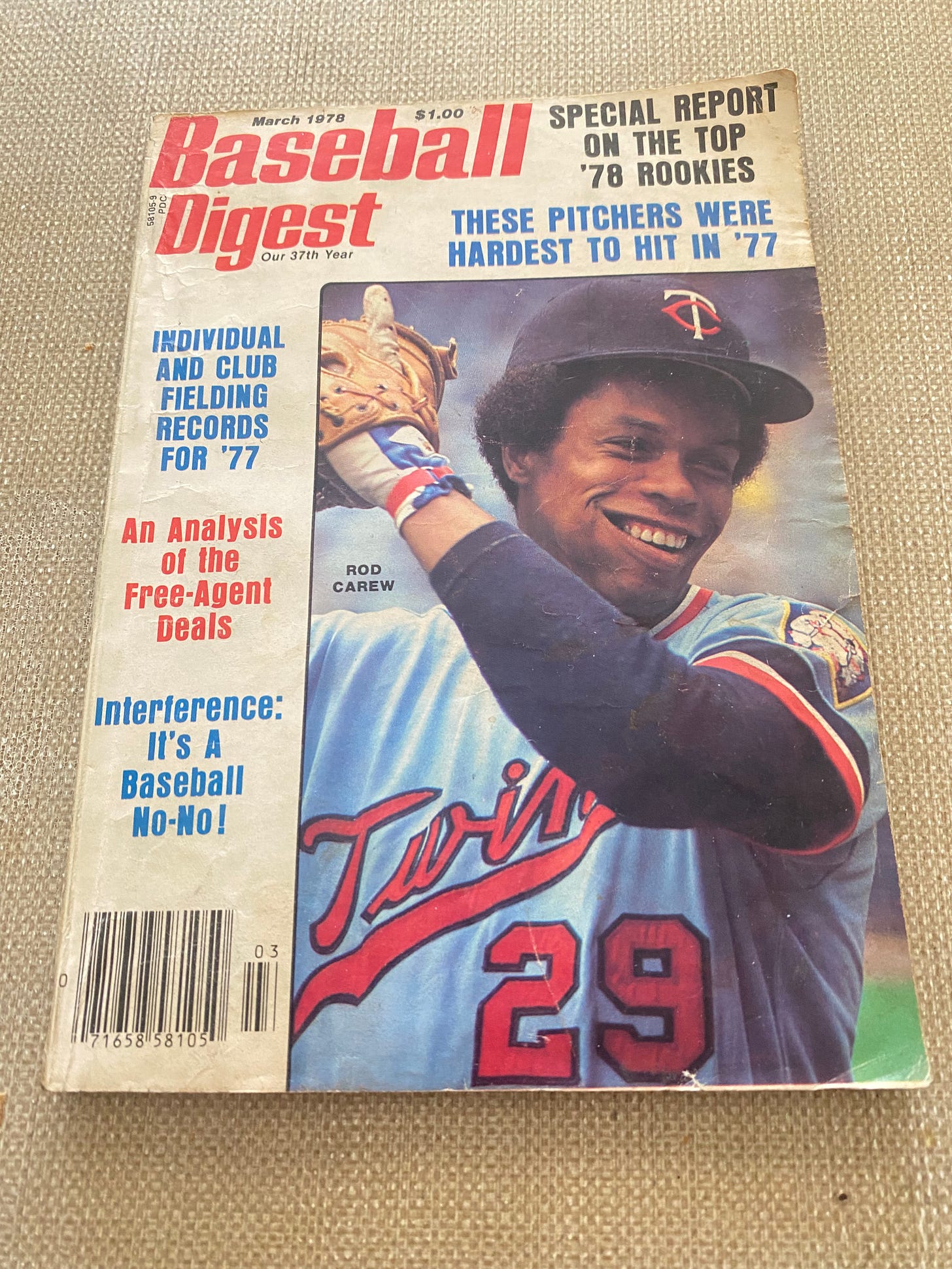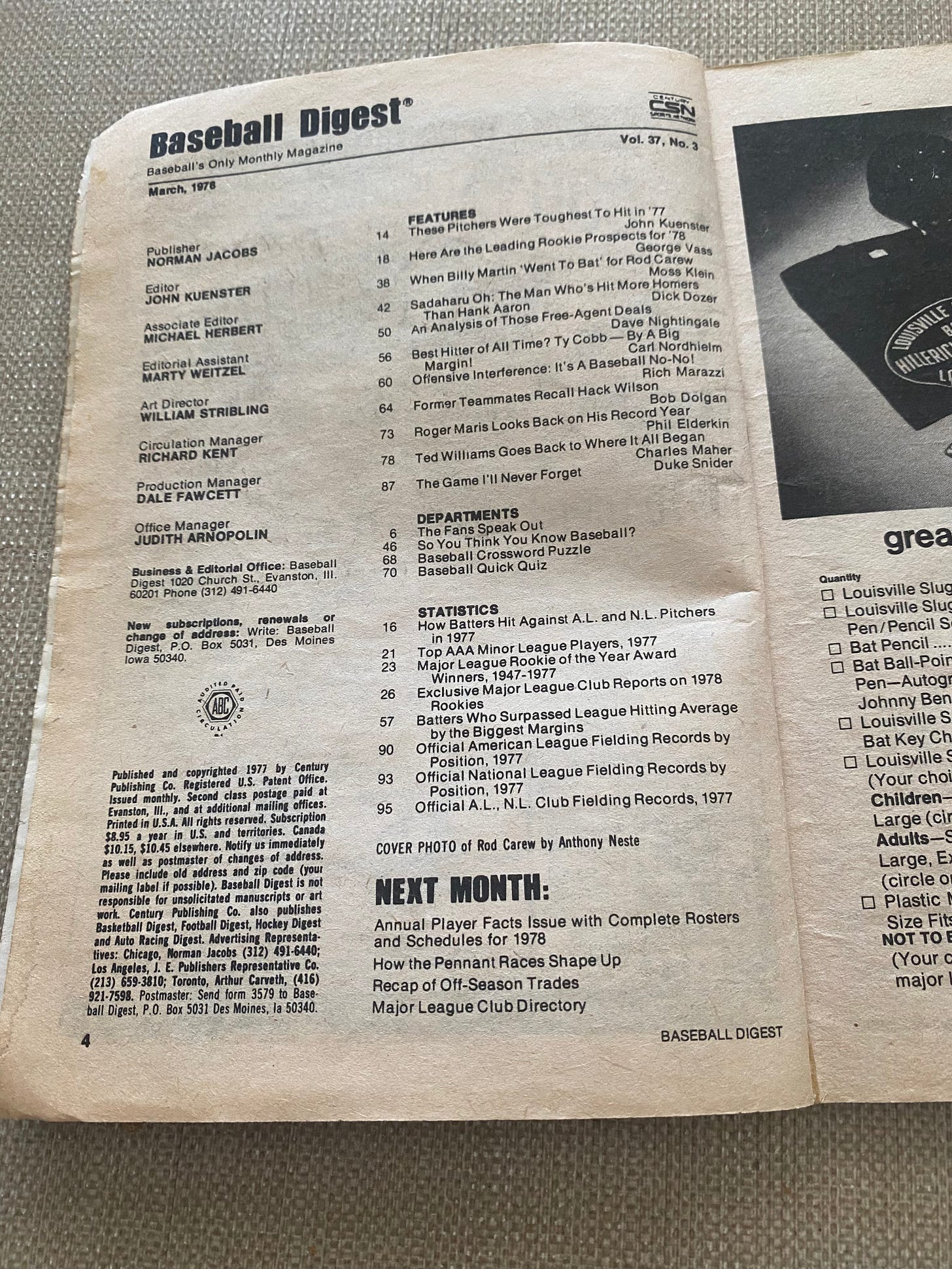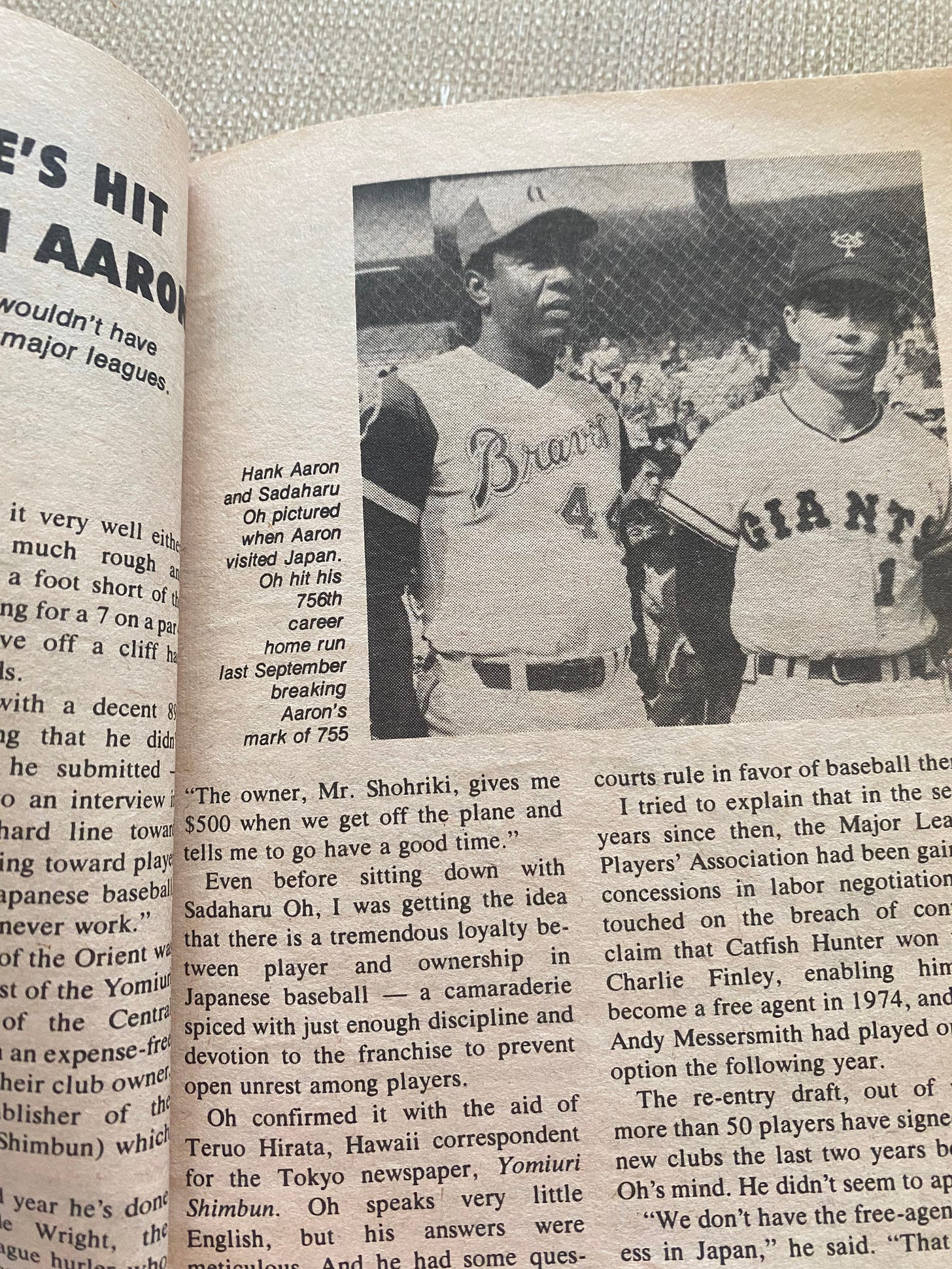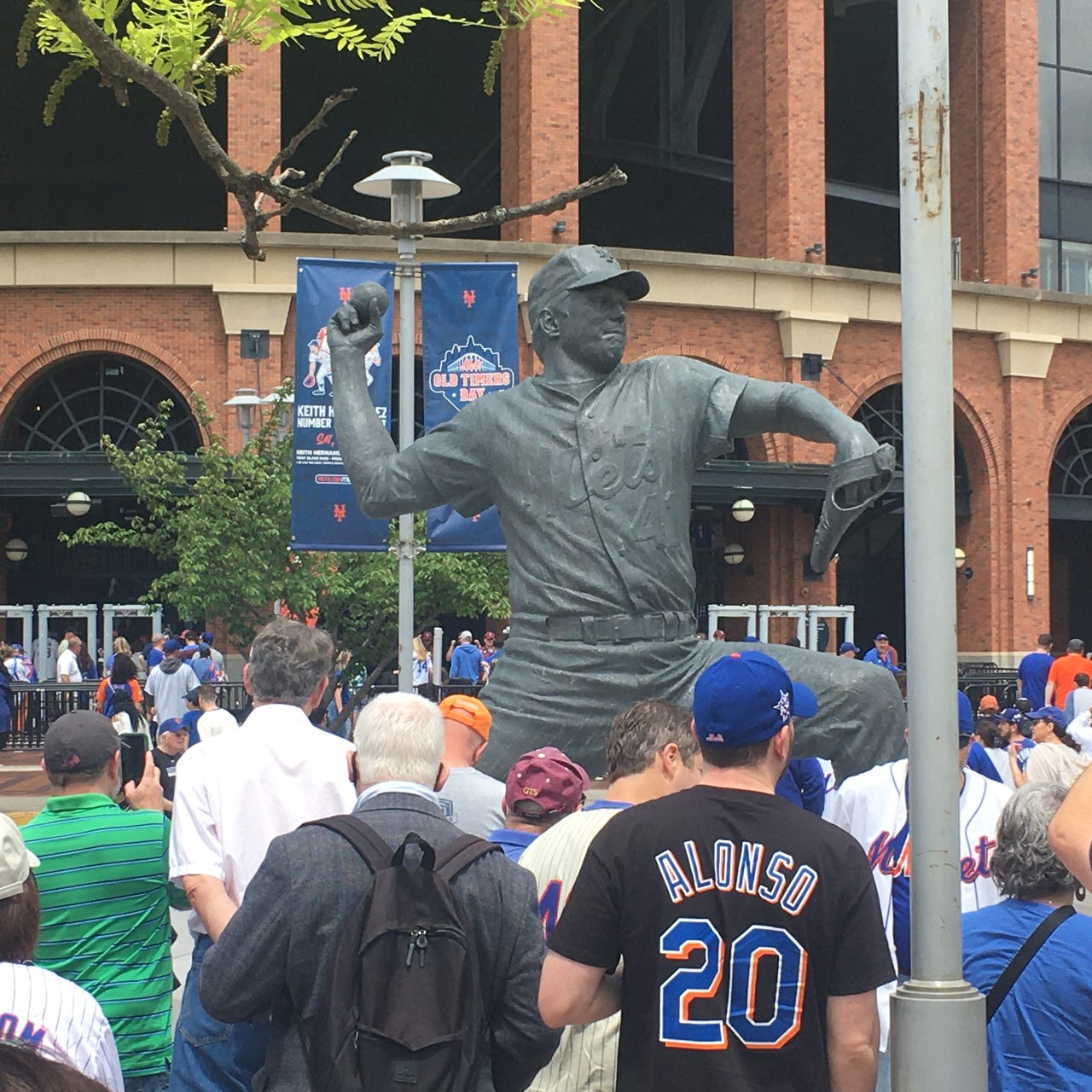March 1978
Guess who’s on the cover of this month’s Baseball Digest? Hall Of Famer Rod Carew. This issue came out months after Carew won the AL MVP award in the season in which he came close to hitting .400. The gist of the cover story dealt with the role Billy Martin played in his early career. Martin was a Twins coach in Carew’s rookie year and then-Twins manager Sam Mele did not like Carew, believing him to be “a moody, trouble-making player.” Martin disagreed, and when he failed to convince Mele not to send Carew to the minors, he went over the manager’s head and directly lobbied Twins owner Calvin Griffith to keep Carew in the majors. It worked. Carew stuck around, won the 1967 Rookie Of the Year award, and Mele was fired as Twins manager 50 games into the season.
Speaking of Rookies of the Year, this issue also included the annual rookie preview for the upcoming season. The 5th paragraph in the article lists a dozen names punctuated with the following. “It’s a fair bet that among them will be found the two rookies of the year.” The list included soon to be familiar names such as Ken Landreaux, Clint Hurdle, and Ray Knight as well as long forgotten names such as Frank Ortenzio and Tom Goffena. Neither ROY was mentioned. To be fair, the 1978 NL winner was Bob Horner, who was still playing for Arizona State at the time. He was the #1 overall pick in the 1978 draft and went directly to the Braves, but no one had any way of knowing that when this issue was written. The eventual AL winner would be Lou Whitaker, who was not mentioned in the article at all.
It was an accident of good timing that I pulled this issue out of my pile the very week that Ichiro Suzuki became the first Japanese player to be elected into the Hall Of Fame. This issue includes an article on Sadaharu Oh, who for years was the only Japanese player whom casual American fans could name, and who months before had surpassed Henry Aaron’s career home run total. The question was raised over how many he would hit if he played in America. This was years before Hideo Nomo, never mind Ichiro, so there was no way to judge how well Japanese stardom would translate to the American game. The consensus here was that Oh would hit around 25-30 homers with a batting average above .300. It’s a fascinating “what if?” Would Oh have had a Hideki Matsui type career in American baseball? Or better?
Best hitter of all time? Ty Cobb - by a big margin. The reason for that designation in this article is not the usual one; his career records for batting average and at the time most hits. This article points out that he had set the single season record for a batting average which was the most points above league average - in 1911 he hit .420, a full 147 points above the league average of .273. He also had 3 out of the top 4 (Nap Lajoie in 1901 came in second) and 8 out of the top 19 seasons. For the record, the vast majority of seasons on the chart of the top 50 which accompanied the article were in the deadball era; there were only a small handful from the post-integration years such as Carew in ‘77, along with seasons from Ted Williams, Stan Musial, Joe Torre, Mickey Mantle, Roberto Clemente, and Rico Carty.
Finally, there’s nothing quite like over romanticizing old ballplayers. In the wake of George Foster’s 1977 season, in which he fell 1 RBI short of a 50 home run, 150 RBI year, it brought back memories of the only NL player to have achieved that feat: Hack Wilson. One of his former Cub teammates, Woody English, offered the following quote. “If he played today he’d hit 80 home runs.” Sure, of course he would.
The HOF Cap Project - AL Central
As per my unofficial duties as the Hall Of Fame Cap Decider, here are my choices for the AL Central teams. Reminder, the Twins history also includes that of the Original Recipe Washington Senators. Looking at the players on these teams it reminds me that there just aren’t enough major leaguers named Elmer or Heinie anymore. Here we go.
Chicago White Sox (12): Luis Aparicio, Luke Appling, Harold Baines, Eddie Collins, Red Faber, Nellie Fox, Ted Lyons, Minnie Minoso, Ray Schalk, Frank Thomas, Ed Walsh, Hoyt Wilhelm
Cleveland Guardians (13): Earl Averill, Lou Boudreau, Stan Coveleski, Larry Doby, Bob Feller, Elmer Flick, Addie Joss, Nap Lajoie, Bob Lemon, Joe Sewell, Tris Speaker, Jim Thome, Early Wynn
Detroit Tigers (10): Ty Cobb, Sam Crawford, Charlie Gehringer, Hank Greenberg, Harry Hellmann, Al Kaline, George Kell, Jack Morris, Hal Newhouser, Alan Trammell
Kansas City Royals (1): George Brett
Minnesota Twins (12): Bert Blyleven, Rod Carew, Joe Cronin, Goose Goslin, Walter Johnson, Jim Kaat, Harmon Killebrew, Joe Mauer, Heinie Manush, Tony Oliva, Kirby Puckett, Sam Rice
Differences: From the White Sox Collins, Schalk, and Walsh have no caps. Wilhelm has a Giants cap on his. For the Guards Flick has no pick. For the Tigers Gehringer has a blank cap. Brett obviously had a Royals cap on his plaque. For the Twins Cronin has a Red Sox cap and Manush is a Tiger.
Explanation time: It is pretty amazing to see how little of a concern caps were in the early days of the Hall. Charlie Gehringer spent 19 years in the majors, all with Detroit, and he has a blank cap? Technically, his head is turned to the side on his plaque, so that is why there is no visible logo, but still. Collins is a close call; he played more games in Chicago than he did in Philadelphia, but some of his best seasons came with the A’s. It looks to me like all told he has more total value as a White Sox player.
Hoyt Wilhelm is a tricky one. In a lot of ways his strongest HOF case comes from his stunning longevity rather than from sustained excellence so the question of which team he made the most impact for isn’t easy. He played for 9 different teams. It was with Chicago that he accumulated his most innings, games, saves, along with the lowest ERA, lowest ERA+, and highest WAR. I’m comfortable with that choice. Like Eddie Collins, Cronin is another player for whom you could make an equally strong argument for two different teams, and largely due to his post-playing career he is more closely identified with the Red Sox. But the majority of his best seasons, including his MVP year, came in Washington.
Heinie Manush also played more games and in more seasons in Washington than he did for any other franchise. He finished 3rd in the MVP vote twice in Washington, his highest finish in Detroit was 5th place once. He also finished 2nd twice while playing for the St. Louis Browns, but those were his only 2 full seasons with St. Louis so a Browns cap would be a stretch. Manush is one of those “OK, whatever” players in the Hall, so there’s no need to expend too much brain energy on his plaque, but I believe Washington is the better choice.
50 Years Ago - Sneak Previews
There’s a famous quote about Hollywood from the writer William Goldman stating that nobody knows anything. It’s meant to convey the idea that despite assurances from all sorts of experts, success or failure of a project is often completely unexpected. Sneak Previews serves as a great example of that. Who could have possibly conceived that a movie review show originating from a local PBS affiliate would survive and thrive for years across multiple iterations?
But that’s what happened when the Chicago PBS station created a monthly review show, originally called Opening Soon At a Theater Near Now, starring the lead critics from the city’s 2 largest daily newspapers, Roger Ebert of the Sun-Times and Gene Siskel of the Tribune. It would eventually undergo a name change, would begin airing weekly, and later nationally. In time the two would become household names and the most powerful film critics in all the land. Sorry, Gene Shalit.
For a long time movie reviews were a staple of local TV news, so it wasn’t an outrageous concept for a series. It was probably a stretch to center it around 2 newspaper writers with minimal television experience. By the time I started watching the show it was several years into its run - I have vague memories of seeing them review Raiders Of the Lost Ark on my first viewing - so they had gotten better at TV by that point, but I can only imagine how shaky they must have been in the earliest episodes.
The show’s format in the PBS days was very straightforward. They reviewed 4 movies per episode, and would close things out by bringing out Spot the Wonder Dog as they each chose their Dog Of the Week, or the worst movie of the week. As I mentioned, I started watching the show regularly in the early 80’s, so those “dogs” were inevitably the latest teenage sex romp comedy or slasher movie. The show’s calling card was the “thumbs up” or “thumbs down” that they used to indicate whether each movie was good or bad.
One of the running talking points during the Siskel & Ebert reign was that people wondered if they hated each other. That was probably true in the earliest days of their show; they worked for rival newspapers after all so there was an ingrained professional rivalry. From what I could gather that rivalry lasted but there was also a tremendous personal respect that they shared. I remember an interview with Roger Ebert in which he flat out stated that the show would not work without Gene Siskel. As he said, if the show was simply one man reviewing movies for a half hour then the response from the audience would be “who is this guy to tell us what movies to see?” 2 hosts create a give and take. Even though I’m reasonably certain that over the years they agreed much more often than they disagreed, at the same time the show had a lot more oomph when their opinions would differ on a particular movie.
In 1982 they parted ways with PBS and took their show to syndication. PBS had intellectual property rights to certain aspects - for example, they couldn’t use the dog anymore so instead they used a skunk and rebranded the closing segment as the stinker of the week - but they were smart enough to have trademarked the thumbs up years beforehand, so that continued to be their signature. Studios recognized the value of slapping “Two Thumbs Up!” on movie posters. Siskel and Ebert’s show thrived in syndication and even went on for several years after both had died.
Sneak Previews itself continued to live on post-Siskel/Ebert. Neal Gabler and Jeffrey Lyons were the original replacement hosts with Michael Medved eventually replacing Gabler, but the show’s profile dropped precipitously. I sure as heck was not going to watch more than one movie review show per week, and since Siskel & Ebert had perfected the format so well, I followed them. I suspect I was not alone. I was surprised to see that Sneak Previews remained on the air until 1996. It wasn’t the same without the original hosts, but a 21 year run for this show is pretty impressive.
Closing Laughs
That will be all for now. Have an outstanding week everyone and I will see you all again on Wednesday.







